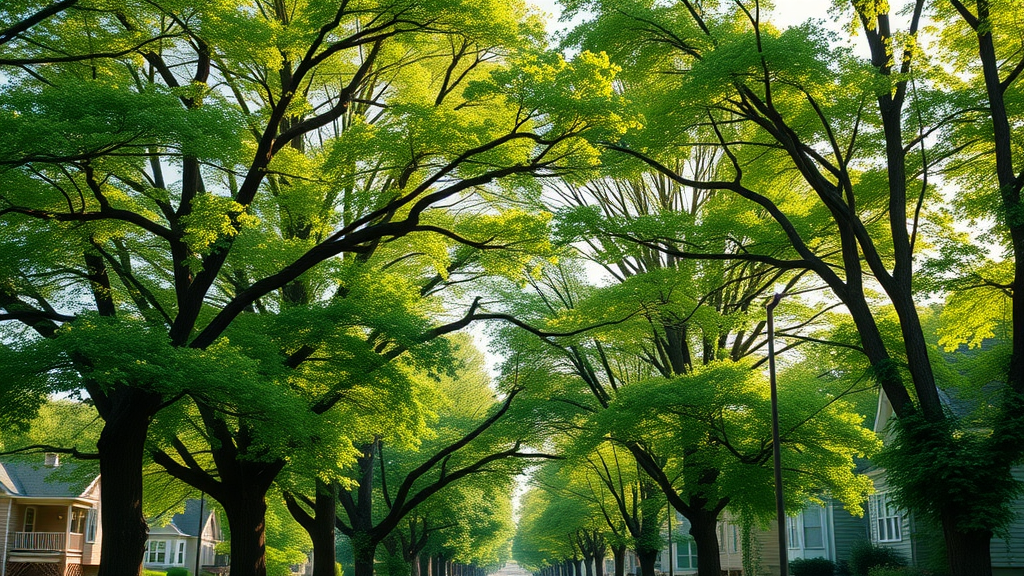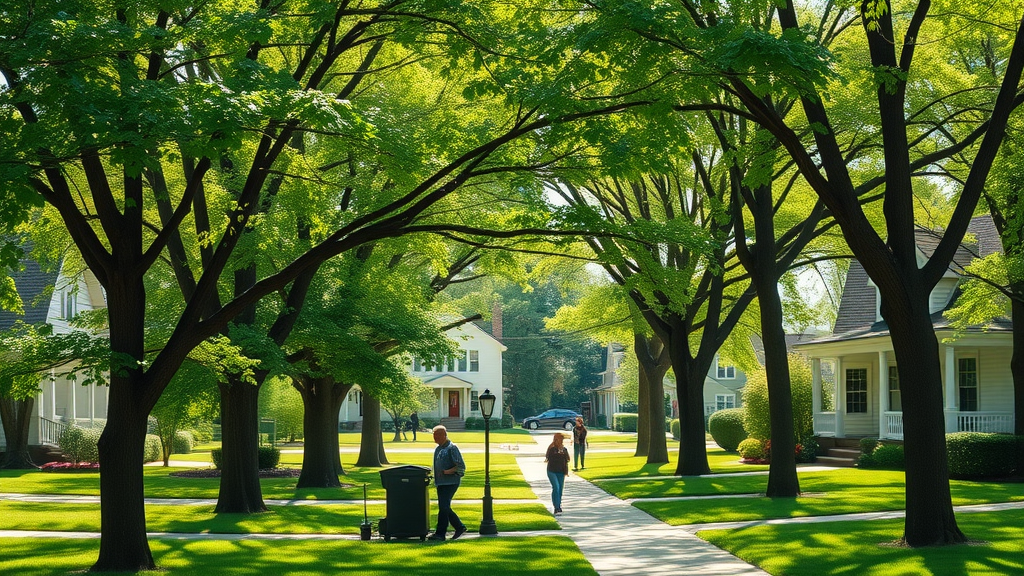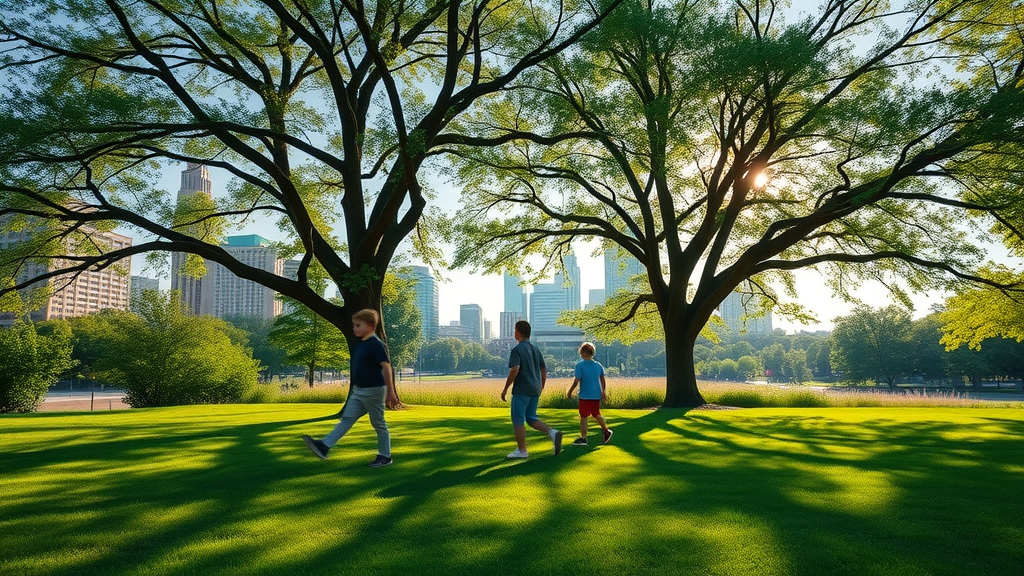Did you know that a mature tree in Kansas City can boost property value by up to 15% but, when neglected, may pose costly risks? Whether you’re a homeowner or manage city property, trusting your trees to expert arborist services Kansas City is a crucial investment in both beauty and safety. Discover how ISA certified professionals deliver unmatched results, safeguard your landscape, and keep urban trees thriving for generations to come.

Discover Why Professional Arborist Services Kansas City Matter More Than Ever
"A mature tree in Kansas City can increase property values by up to 15%—but unsafe or neglected trees can become costly liabilities."
Urban landscapes in Kansas City are defined by their vibrant greenery and mature trees, which add value and visual appeal to neighborhoods and businesses alike. Yet, with growing urban development and unpredictable Midwest weather, the demand for expert arborist services Kansas City has never been higher. Hazardous limbs, storm-damaged trees, and dangerous diseases like the emerald ash borer threaten the health and safety of your trees—and your property.
Engaging certified professionals yields benefits beyond simple tree trimming or removal. Professional tree care service teams deliver accurate diagnoses, tailored health care strategies, and informed preventative treatments to mitigate risks and extend the life of your urban trees . Their expertise is critical in ensuring that your investment is protected, your trees stay vibrant, and your property remains safe.
- Top reasons to choose arborist services in Kansas City
- How certified arborists ensure superior tree care
- The most sought-after tree services and what they include
- Transparent pricing and what to expect from consultations
- Distinguishing professional arborists from general tree care providers
Complete Guide to Arborist Services Kansas City for Tree Care, Maintenance, and Removal
Understanding Arborist Services in Kansas City: From Diagnosis to Treatment

A robust tree care service involves more than cutting branches or felling trees—it starts with comprehensive assessment and ends with ongoing support for tree vitality. In Kansas City , arborist services begin with an expert evaluation. ISA certified arborists use advanced diagnostic tools to spot diseases, insect problems like the ash borer , and structural weaknesses. Their training allows them to recommend effective treatments tailored to specific species and the unique challenges of urban trees .
Once issues are identified, a certified arborist shapes a personalized care plan, which may include strategic pruning, fertilization, pest management, or even cabling and bracing to support weakened limbs. For more severe cases, services like stump grinding and tree removal are handled safely and with minimal disruption. The hallmark of true professionals is transparency—expect detailed consultations, written reports, and regular follow-ups to monitor progress and keep your canopy in top shape.
- Tree care service assessments
- Personalized urban tree maintenance
- Advanced health care solutions
- Cabling and bracing for city trees
- Stump grinding and removal
- ISA certified arborist consultations
Tree Care by Certified Arborists: Why ISA Certification Matters for Arborist Services Kansas City
"Only an ISA Certified Arborist can offer a comprehensive tree care strategy that adheres to industry standards in Kansas City."
When searching for arborist services Kansas City , homeowners and city planners should look for teams that include certified arborists . The International Society of Arboriculture (ISA) sets rigorous standards for both knowledge and practice, ensuring that certified specialists are insured, trained, and committed to the latest industry best practices. Their certification demonstrates expertise in tree health care , disease management, and the specialized management of challenging issues like emerald ash borer infestation.
ISA certification is not just a badge—it's your guarantee that safety guidelines and ethical practices are observed. Kansas City tree service providers with ISA credentials understand local ordinances, soil conditions, climate stresses, and can formulate precise tree health strategies. Unlike standard tree services, their solutions go beyond superficial trimming to include preventive care, long-term treatment plans, and strategic urban forestry management.
Kansas City Tree Service: Key Differences Between Certified Arborists and Standard Tree Services

Not all tree care professionals are equal—choosing between a run-of-the-mill tree service and a certified arborist makes a significant impact. While general providers can handle basic removals or pruning, only a certified professional can deliver science-backed, comprehensive care that improves both tree longevity and property value. Their involvement is crucial for tricky situations such as ash borer infestations or emergency limb removals, where improper action can damage not only the tree but also surrounding structures.
Professional tree care teams stand apart by offering thorough consultations, digital health tracking, ongoing advice, and access to specialized solutions like cabling and bracing for valuable city trees. Their training ensures that plant health care , proper pruning, and the safe removal of hazardous branches are performed with minimal risk and maximum benefit for your landscape.
- Credentials of professional tree care teams
- Best practices for urban tree management
- Overview of ISA certified arborist expertise
- Specialized solutions for emerald ash borer and ash borer infestations
Popular Arborist Services Kansas City: Tree Removal, Pruning, and Emergency Urban Tree Care
- Tree removal for hazardous or diseased city trees
- Precision pruning and trimming
- Stump grinding and root management
- Emergency storm damage response
- Cabling, bracing, and structural supports
- Plant health care and preventive treatments

Tree removal is often necessary when trees become dangerous due to disease, age, or storm damage. Certified arborists employ equipment and safety protocols to fell and remove large trunks—even those in tight urban spaces—while minimizing risks to people and property. After removal, stump grinding and root management keep your yard looking clean and prevent regrowth or pests.
Precision pruning and trimming are vital for shaping healthy growth, removing hazardous branches, and ensuring that trees don’t crowd power lines or structures. For urgent issues, certified teams offer rapid response to address storm damage, hazardous situations, or fallen limbs. And with preventive care—like pest treatments, soil health improvement, and nutrient plans—your trees stay robust even in the face of pests like the emerald ash borer .
Dealing with Emerald Ash Borer: Strategies by Arborist Services Kansas City
The emerald ash borer poses a grave threat to Kansas City's ash trees. This invasive beetle rapidly kills untreated trees, often before owners even notice the problem. Certified arborists are trained in early detection through canopy inspections and bark analysis, enabling them to identify infestations and advise targeted ash borer treatments. Acting early is essential—once symptoms progress, saving the tree becomes much more difficult.
Treatment options may include soil and trunk injections, removal of heavily infested trees, and ongoing preventive sprays. Long-term, professional teams also develop neighborhood-wide protection strategies to limit the spread of the pest to other urban trees. If you have ash trees in your landscape, scheduling a prompt ISA certified consultation could be the difference between saving and losing your valuable shade trees.
- Emerald ash borer identification
- Treatment plans by certified arborists
- Effective ash borer prevention methods
- Long-term urban tree protection
How to Choose the Best Arborist Services Kansas City for Your Tree Care Needs
Evaluating Professional Tree Service Options in Kansas City

With so many tree service company options available, making the right choice for your Kansas City tree care requires careful evaluation. Begin by verifying the company’s credentials: an ISA certified arborist or ISA certified arborists team ensures adherence to industry standards. Next, compare their service offerings—top providers don’t just trim branches, they offer full-spectrum solutions from plant health care and tree fertilization to emergency storm recovery and cabling for weak city trees .
Ask questions about insurance, licensing, and written guarantees. Reliable teams will share client testimonials, reviews, and even case studies of successful hazardous tree removals or disease control efforts. Transparency, professionalism, and a willingness to educate are all traits that mark a reputable tree specialist serving Kansas City and Overland Park. Don’t hesitate to ask for proof of ISA certification and be clear about what you expect from your consultation.
- Questions to ask before hiring
- Verifying ISA certification
- Comparing service offerings and guarantees
- Assessing reviews and client testimonials
| Service | Average Cost (Kansas City) | Service Includes |
|---|---|---|
| Standard Tree Pruning | $200–$500 | Trimming, debris removal |
| Hazardous Tree Removal | $700–$2,500 | Removal, site cleanup |
| Stump Grinding | $100–$400 | Grinding per stump |
| Consulting/Assessment | $50–$200 | Diagnosis, written report |
| Pest & Disease Treatment | $80–$300 | Emerald ash borer, general health |
Transparent Pricing for Arborist Services Kansas City: What Should You Expect?
Factors That Influence Arborist Pricing in Kansas City
The cost of arborist services Kansas City depends on several key factors. The size and location of your tree directly impact the time, equipment, and crew size needed. Tree removal of a mature urban oak costs more than pruning a young maple due to safety, logistics, and disposal requirements. The type of service—whether health care , plant health care , simple trimming, or emergency response—also shapes the estimate.
Emergency situations, which demand prompt action to protect people or property, typically command higher rates, as do jobs requiring specialized gear or permits for city streets or power line proximity. Your provider should clearly explain all potential charges, including post-job site cleanup and debris hauling. Always choose transparency and documentation to avoid hidden costs and ensure you receive the highest quality care service.
- Tree size and location
- Type of service (removal, pruning, health care)
- Emergency vs. scheduled appointments
- City tree ordinances and permits
What Sets Top Tree Care Services in Kansas City Apart: Reviews and Success Stories
"Kansas City tree owners trust certified arborists for their commitment to safety, transparent service, and exceptional care results."

Trusted Kansas City tree care service companies distinguish themselves with a track record of satisfied customers, documented proof of safety standards, and visible improvement in urban tree health. Reviews consistently highlight the difference that knowledgeable, certified care teams make—customers report prompt service, clear communication, and successful outcomes for everything from tree removal to advanced pest control.
From dangerous, leaning city trees safely removed without property damage to full rebirths for ash groves threatened by emerald ash borer , case studies abound in Kansas City neighborhoods. Homeowners and property managers seeking value, peace of mind, and a lush landscape should consider not just the estimate, but the proven expertise, commitment to ongoing education, and robust guarantees offered by top-tier service companies .
- Customer satisfaction ratings
- Case studies of hazardous city tree removals
- Highlights of urban tree health care improvements
People Also Ask
What do arborists charge per hour?
- Arborists in Kansas City typically charge between $75 and $150 per hour, depending on their experience, the complexity of the job, and the equipment required. Certified arborists or those offering specialized tree care services may charge at the higher end of this range.
Is hiring an arborist worth it?
- Hiring an arborist is worth it for maintaining the health, safety, and value of your property’s trees. Certified arborists have the training and tools to identify risks and provide appropriate care, reducing long-term costs and liabilities associated with neglected trees.
What is the difference between a tree service and an arborist?
- A tree service may perform basic tree removal or trimming, while an arborist is a trained and often ISA certified professional who diagnoses tree health, prescribes treatments, and follows industry best practices for comprehensive urban tree care.
Why do arborists charge so much?
- Arborists charge higher rates because of their specialized training, certification (such as ISA), insurance, and the risks associated with professional tree care and removal. Their fees reflect experience, safety, and high-quality service.
Frequently Asked Questions: Arborist Services Kansas City & Tree Care Expertise
- Are arborist consultations in Kansas City free? Some companies offer free initial consultations while others may charge a fee, which is often credited toward any services performed.
- How often should I schedule tree care? Most certified experts recommend annual inspections, though frequency may increase for at-risk trees or after severe weather events.
- What happens to debris after tree removals? Top providers include debris removal, site cleanup, and eco-friendly disposal in their standard service packages.
- Are your arborists insured and licensed? Reputable arborist services in Kansas City are fully insured, bonded, and licensed to work within local ordinances.
- What are signs my tree needs removal? Warning signs include significant leaning, hollow trunks, advanced decay, severe pest infestations, and roots causing foundation issues.
Ready for Expert Arborist Services Kansas City? Get Your No-Obligation Quote Today
Give your landscape the care it deserves—contact a certified Kansas City arborist for a personalized assessment and a transparent quote with no obligation.
 Add Row
Add Row  Add
Add 




Write A Comment